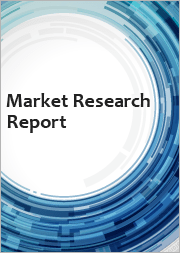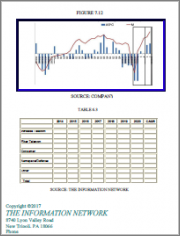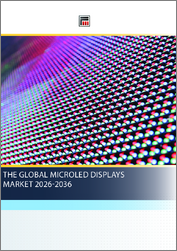
|
시장보고서
상품코드
1827449
LED(발광 다이오드) 시장 : 기술, 연색성 지수, 최종사용자, 유통 채널별 - 세계 예측(2025-2032년)Light Emitting Diodes Market by Technology, Color Rendering Index, End User, Distribution Channel - Global Forecast 2025-2032 |
||||||
LED(발광 다이오드) 시장은 2032년까지 CAGR 7.50%로 1,844억 7,000만 달러로 성장할 것으로 예측됩니다.
| 주요 시장 통계 | |
|---|---|
| 기준 연도 2024년 | 1,034억 2,000만 달러 |
| 추정 연도 2025년 | 1,110억 5,000만 달러 |
| 예측 연도 2032 | 1,844억 7,000만 달러 |
| CAGR(%) | 7.50% |
기술 혁신, 공급망 역학, 규제 압력, 전략적 우선순위를 형성하는 채택 촉진제를 종합한 현대 LED 산업의 종합적인 방향성
LED 산업은 기술 혁신, 진화하는 정책 프레임워크, 수요 패턴의 변화가 교차하며 제품 라이프사이클과 채택 곡선을 재정의하는 변곡점에 서 있습니다. 이 소개에서는 제조업체, 시스템 통합업체 및 최종사용자의 전략적 우선순위를 결정하는 공급망 역학 및 규제 상황과 최근 발광 기술의 발전을 통합하여 현재 상황을 구성하고 있습니다. 디스플레이 및 조명 성능 측정 기준의 급속한 발전과 함께 내구성, 에너지 효율성, 스펙트럼 품질에 대한 기대치가 높아지고 있습니다. 그 결과, 조직은 단기적인 상업화 압력과 제조 역량 및 재료 과학에 대한 장기적인 투자 사이에서 균형을 맞춰야 합니다.
부품 수준의 개선에서 시스템 사고로 전환함에 따라 이해관계자들은 LED를 단순히 포인트 제품이 아닌 스마트 빌딩 아키텍처, 자동차 전기화 전략, 헬스케어 조명 표준의 필수적인 요소로 평가하고 있습니다. 이러한 통합적 관점은 기존의 성능 벤치마크와 더불어 상호운용성, 제어, 데이터 기반 유지보수 패러다임의 중요성을 강조합니다. 마찬가지로 중요한 것은 공급망에 대한 인사이트입니다. 세계 원자재 조달, 웨이퍼 제조 능력, 조립 생태계는 제품 가용성과 비용 구조에 지속적인 영향을 미칩니다. 연구개발, 조달, 약사, 시장 개척의 각 팀은 기술적 유망성과 운영의 복잡성 및 정책의 변동성이 밀접하게 연관된 환경을 극복하기 위해 협력해야 합니다.
차세대 이미시브 기술, 채널의 진화, 성능 기준의 강화로 인한 중요한 패러다임의 변화가 제품 개발 및 시장 진입 전략을 재구성하고 있습니다.
최근 발광 재료의 비약적인 발전, 아키텍처의 소형화, 센싱 및 제어 플랫폼과의 통합으로 인해 LED를 둘러싼 환경이 크게 변화하고 있습니다. 마이크로 및 미니 스케일 아키텍처의 아키텍처 발전은 기존의 폼팩터를 넘어서는 설계의 가능성을 넓혀 초 고밀도 디스플레이, 정밀 수술용 조명, 고휘도 차량용 모듈 등을 가능하게 하고, 열 관리 및 시스템 통합에 대한 새로운 접근 방식을 요구하고 있습니다. 동시에 유기 및 양자점과 같은 발광 기술이 성숙해지면서 차별화된 분광 특성과 조정 가능한 색상 성능을 제공함에 따라 제품 설계자는 효율성, 수명, 색상 충실도 간의 트레이드오프를 고려해야 합니다.
이러한 기술 주도의 변화는 조달 및 유통 행태의 병행적인 변화로 인해 증폭되고 있습니다. 온라인 채널의 부상은 제품 발견과 맞춤화 능력을 가속화하고, 오프라인 채널은 현대적인 소매 형태와 거래 파트너십을 통해 계속 적응하고 있습니다. 최종사용자의 기대는 에너지 최적화, 인간 중심 조명, 원격 진단을 결합한 종합적인 솔루션으로 향하고 있으며, 조명 제조업체, 제어 벤더, 빌딩 관리 시스템 제공업체 간의 제휴가 필요합니다. 정책 및 표준 측면에서, 더 엄격한 에너지 규제와 진화하는 연색성 표준으로 인해 제조업체는 더 높은 성능 임계값에 대해 제품을 인증해야 하며, 이는 품질과 컴플라이언스를 통한 차별화를 촉진하고 있습니다. 이러한 변화로 인해 R&D의 민첩성, 공급망의 탄력성, 엄격한 기능적 및 경험적 요구 사항을 충족하는 통합적이고 인증된 솔루션을 제공하는 능력이 기존 기업의 입지를 좌우하는 상황이 조성되고 있습니다.
2025년 시행될 미국의 관세 조치가 LED 제조 생태계 전반의 공급망 선택, 조달 전략 및 운영 탄력성을 어떻게 변화시켰는지를 평가합니다.
2025년, 미국에서 새로 제정된 관세 및 무역 조치의 누적된 영향은 세계 LED 밸류체인에 더 많은 복잡성을 가져왔고, 조달 의사결정, 비용 통과 역학, 공급업체 다각화 전략에 영향을 미쳤습니다. 특정 부품 및 완성된 모듈에 대한 수입 관세는 다운스트림 제조업체가 당분간 조달 지역을 재평가하고, 현지 조립을 가속화하거나 기술 및 인증 요건을 충족하는 대체 공급업체를 인증하도록 유도했습니다. 그 파급효과는 물류 계획에도 영향을 미쳐 리드타임이 길어지고, 컴플라이언스 준수 단계가 쌓이면서 가시성과 불의의 사태에 대비한 재고 버퍼의 중요성이 높아졌습니다.
운영 조정뿐만 아니라 관세 상황은 수직 통합 및 지역 제조 발자국에 대한 전략적 논의를 선명하게 만들었습니다. 어떤 기업은 국경 간 마찰을 줄이기 위해 중요한 공정을 현지화할 계획을 세웠고, 어떤 기업은 관세 면제 및 분류 조정을 우선순위에 두고 공급 계약을 체결하여 노출을 줄였습니다. 또한, 조달팀은 무역 제도 특혜 대상 부품의 엔드 투 엔드 추적성을 보장하기 위해 공급업체에 대한 감사를 강화했습니다. 제품 계획의 관점에서 볼 때, 이러한 관세 압력은 모듈화를 강조하고, 광도 측정 성능을 손상시키지 않고 위험도가 높은 부품을 대체하고, 제조에 적합한 설계 이니셔티브를 가속화했습니다. 경쟁 환경을 종합하면, 2025년 관세 환경은 변화하는 규제 제약 속에서 경쟁력을 유지하기 위해 기업이 적응형 조달 전략, 견고한 비용 모델링, 무역 전문가와의 적극적인 관계를 유지해야 한다는 점을 강조하고 있습니다.
LED 기술, 연색성, 최종사용자 용도, 유통 경로를 일치시키고 R&D 및 시장 출시의 우선순위를 정할 수 있는 세분화 기반 인사이트를 제공합니다.
제품 및 소비자 세분화에 대한 세밀한 이해를 통해 투자 우선순위를 정하고 기술, 스펙트럼 성능, 사용 시나리오, 채널 배치에 걸쳐 가치 제안을 조정할 수 있는 로드맵을 제공합니다. 기술별로 분석하면, 제품 포트폴리오는 기존 LED, 마이크로 LED, 미니 LED, 유기 LED(발광 다이오드), 양자점 기반 LED로 나뉘며, 각 카테고리는 제조 복잡성, 성능 트레이드오프, 시스템 통합 경로를 명확하게 보여줍니다. 기존 LED는 여전히 대량 생산 및 비용 중심의 설치를 위한 기반이지만, 마이크로 LED와 미니 LED는 초고해상도 디스플레이와 특수 폼팩터를 가능하게 합니다. 유기 및 양자점 기술은 프리미엄 디스플레이 및 인간 중심 조명 애플리케이션에 어필할 수 있는 향상된 색상 조정 가능성과 독특한 스펙트럼 품질을 제공하지만, 다른 재료 조달 및 수명 관리 접근 방식이 필요합니다.
연색성 차별화도 중요한 축으로 고연색성 제품과 표준연색성 제품으로 구분됩니다. 고CRI 제품은 헬스케어 환경, 리테일 환경, 호텔 등 정확한 색 재현이 기능적, 심미적 성과를 가져다주는 용도로 지정이 증가하고 있습니다. 표준 CRI 솔루션은 정확한 색 충실도보다 에너지 효율과 내구성이 우선시되는 많은 산업 및 실외 응용 분야에서 계속 사용되고 있습니다. 최종 용도 세분화는 자동차, 상업, 의료, 산업, 실외, 주거용으로 구성되며, 상업은 다시 접객업, 사무실, 소매업으로 세분화됩니다. 유통 채널 세분화에서는 오프라인과 온라인 경로를 구분하고, 오프라인은 다시 현대적 거래와 전통적 거래 형태로 나뉩니다. 오프라인 채널은 종종 현장 평가와 B2B 조달 관계를 촉진하는 반면, 온라인 채널은 설정 가능성, 빠른 견적, 더 넓은 지역에 도달 할 수 있습니다. 이러한 세분화의 렌즈를 통합함으로써 공급업체는 기술 역량과 구매자의 우선순위가 가장 밀접하게 일치하는 곳에 R&D 로드맵과 판매 전략을 매핑할 수 있습니다.
아메리카, 유럽, 중동 및 아프리카, 아시아태평양의 다양한 규제 체계, 제조 역량, 수요 프로파일을 조화시키는 지역 전략의 필요성
지역 역학에 따라 수요 패턴, 규제 환경, 생태계의 강점이 다양해지고, 경쟁사의 포지셔닝과 제휴 전략이 형성됩니다. 아메리카에서는 상업용 건물 개조 프로그램, 자동차 전동화, 인프라 현대화 계획이 고효율 조명기구와 지능형 조명 제어의 채택을 촉진하고 있으며, 강력한 성능과 에너지 규범 준수에 초점을 맞춘 공급업체에게 기회를 창출하고 있습니다. 반면, 유럽, 중동 및 아프리카는 규제의 엄격함과 지속가능성에 대한 노력이 모자이크처럼 섞여 있습니다. 유럽 관할권에서는 엄격한 효율 기준과 순환성 관행을 중시하는 반면, 유럽 내 신흥 시장에서는 변동하는 전력 및 환경 조건을 견딜 수 있는 비용 효율적이고 내구성이 뛰어난 솔루션을 우선시합니다. 이러한 지리적 다양성으로 인해 제조업체는 지역에 맞는 제품 라인과 인증 로드맵을 만들어야 할 필요성이 대두되고 있습니다.
아시아태평양은 첨단 웨이퍼 제조 능력과 패널 조립 능력, 그리고 소비자 및 산업용 애플리케이션에 대한 활발한 지역 수요와 함께 제조 규모와 부품 공급의 중심지로서 계속 유지되고 있습니다. 이 지역의 촘촘한 공급업체 네트워크와 소형 디스플레이 기술 채택이 가속화되면서 신속한 프로토타이핑과 단계적 혁신 주기를 뒷받침하고 있습니다. 아시아태평양의 R&D 클러스터와 공급망 허브 간의 국경 간 협력과 전략적 파트너십은 빠른 반복을 가능하게 하지만, 지정학적 고려와 무역 정책으로 인해 지역 다변화와 공급망 투명성에 대한 병행 투자가 필요합니다. 전반적으로, 각 지역의 인사이트는 성공적인 플레이어는 세계 제품 플랫폼과 각 지역에 특화된 컴플라이언스, 유통, 서비스 모델을 조화시켜 이질적인 기회 세트를 획득할 수 있는 플레이어임을 시사합니다.
경쟁 정보 및 역량에 초점을 맞춘 정보를 통해 기술 차별화, 수직적 통합 및 채널 실행이 LED 생태계에서 지속적인 리더십을 결정하는 방법을 밝힙니다.
LED 생태계의 경쟁 역학은 스마트 기능을 확장하는 레거시 조명 제조업체, 재료 및 웨이퍼 혁신을 주도하는 전문 부품 공급업체, 디스플레이 등급 발광 솔루션을 추진하는 기술 중심 진입업체가 융합된 것이 특징입니다. 주요 기업들은 화합물 반도체 연구개발, 광학 및 열공학, 통합 제어 아키텍처에 걸친 엔드-투-엔드 역량으로 차별화를 꾀하고 있습니다. 고성능 이미터와 첨단 광학 기술 및 제어 소프트웨어를 결합한 고성능 이미터 등 상호 보완적인 역량을 가진 기업 간의 전략적 파트너십은 새로운 폼팩터 및 인간 중심 조명 솔루션의 시장 출시 시간을 단축하는 일반적인 경로가 되고 있습니다.
투자 패턴은 장수명 형광체, 개선된 루멘 유지보수, 온보드 센싱을 통한 예측 유지보수 등 구매자의 총소유비용(TCO)을 절감하는 기능에 대한 프리미엄을 보여줍니다. 동시에 채널 전략도 진화하고 있습니다. 일부 기업은 대형 상업용 OEM 및 자동차 OEM과의 직접적인 관계를 강화하고, 다른 기업은 판매 파트너를 활용하여 지리적 범위를 확장하고 있으며, 특히 현지 인증 및 서비스 인프라가 중요한 지역에서는 이러한 경향이 두드러집니다. 에피택셜 구조, 인광체 화학, 열 인터페이스 솔루션 등의 지적재산권 포트폴리오는 제조 공정 노하우 및 수율 최적화 방법론과 마찬가지로 여전히 전략적 자산입니다. 경쟁의 움직임을 주시하는 이해관계자들에게는 기술 차별화, 수직적 통합, 채널 실행의 상호 작용이 누가 프리미엄 애플리케이션과 장기적인 파트너십을 확보할 수 있는지를 결정하게 될 것입니다.
공급망 강화, 지역 생산 가속화, 조명 및 제어 통합 솔루션의 수익 창출을 위한 업계 리더를 위한 실용적이고 영향력 있는 전략적 행동
업계 리더는 인사이트를 경영 우위와 지속가능한 상업적 성과로 전환하기 위해 일련의 실용적이고 영향력 있는 행동을 취해야 합니다. 첫째, 완전한 개선 없이도 위험도가 높은 부품을 대체할 수 있는 모듈식 제품 아키텍처를 우선시하여 공급 충격과 관세로 인한 비용 변동에 대한 내성을 향상시킵니다. 둘째, 고급 공급업체 생태계에 대한 접근성을 유지하면서 운임, 규정 준수, 리드타임의 균형을 고려하여 현지 제조 및 조립 역량에 투자합니다. 셋째, 제품 로드맵을 새로운 성능 기준 및 인간 중심 조명 사양과 일치시켜 헬스케어, 접객업, 소매 환경에서의 프리미엄 애플리케이션을 확보합니다. 넷째, 제어장치와 BMS 벤더 간 더 깊은 파트너십을 구축하여 일회성 기기 판매가 아닌 라이프사이클 가치를 중시하는 통합 솔루션을 제공합니다.
상업적 관점에서는 현대 상거래와 전통 상거래 오프라인 파트너를 위한 제품을 차별화하여 채널 세분화를 강화하는 한편, 맞춤형 주문과 빠른 견적을 위해 온라인 구성을 가속화합니다. 거래 규정 준수에 대한 전문 지식과 시나리오 기반 비용 모델링을 조달 결정에 통합하여 조달 프로세스를 강화합니다. 마지막으로, 예측 진단으로 수익을 창출하고, 중요한 최종사용자를 위해 제품 가동률 향상을 유지하며, 분석 기반 유지보수 서비스를 전개합니다. 이 두 가지를 결합하여 방어적인 회복력과 공격적인 가치 획득을 모두 지원하여 기업이 품질, 서비스, 통합 솔루션 제공으로 경쟁할 수 있도록 지원합니다.
1차 조사, 기술 문헌 검토, 시나리오 분석을 결합한 투명한 다중 소스 조사 방법을 통해 실용적인 인사이트를 확보할 수 있습니다.
이 조사 방법은 데이터 출처와 분석 방법의 투명성을 유지하면서 엄격하고 반복 가능한 인사이트를 제공하기 위해 설계된 다중 소스 방식을 채택하고 있습니다. 업계 임원, 엔지니어링 리더, 조달 전문가, 채널 파트너와의 구조화된 인터뷰를 통해 기술 채택, 조달 행동, 규제 준수 우선순위에 대한 생생한 관점을 파악할 수 있는 1차 정보를 수집했습니다. 2차 정보원으로는 기술 문헌, 표준 문서, 일반에 공개된 기업 정보 등을 이용하여 제품 능력, 성능 속성, 전략적 발표 등을 검증하였습니다. 비교 분석을 통해 이러한 인풋을 삼각측량하여 수렴되는 주제를 파악하고, 보다 면밀한 업무 검토가 필요한 차이점을 강조했습니다.
분석 방법으로는 인터뷰 동향에 대한 질적 코딩과 기술 및 지역 차원에 걸친 트렌드 매핑을 결합하여 재료 혁신이 애플리케이션 요구사항과 상호 작용하는 방식을 횡단면적으로 해석할 수 있도록 했습니다. 시나리오 분석은 특히 조달 전환 및 관세 영향에 대한 전략적 옵션의 스트레스 테스트에 사용되었으며, 사용 사례 기반 검증은 제조 및 유통 모델 전반에 걸쳐 성공적인 적응을 강조했습니다. 적절한 경우, 해석 가능성을 보장하기 위해 가정과 정의를 명확하게 문서화했습니다. 이 조사는 기술적 세부 사항과 업무적 현실성에 충실하고, 고객별 데이터와 후속 브리핑을 통해 검증 가능한 실용적인 발견에 중점을 두고 있습니다.
기술 차별화, 업무 적응성, 부문 간 협력이 어떻게 진화하는 LED 환경에서 장기적인 경쟁력을 결정하는지에 대한 결론적 관점
결론적으로, LED 산업은 재료 과학의 발전, 시스템 수준의 통합, 규제 압력, 무역 정책의 변화가 전략적 의사결정에 공동으로 영향을 미치는 수렴적 변화의 시기를 항해하고 있습니다. 모듈화된 제품 설계를 채택하고, 지역적 제조 탄력성에 선택적으로 투자하고, 제어 시스템 및 서비스 기반 제품에 대한 역량을 확장하는 파트너십을 구축하는 기업이 성공할 것으로 보입니다. 프리미엄 환경에서의 높은 CRI 수요, 자동차 및 헬스케어 애플리케이션의 특수한 요구, 온라인 구성 가능성과 오프라인 거래 채널 간의 차별화된 유통 역학의 상호 작용은 제품 및 상업 전략에 대한 미묘하고 세분화된 접근 방식을 요구하고 있습니다.
앞으로 리더는 기술적 차별화와 업무적 적응성을 동등하게 중요시해야 합니다. 신중한 공급업체 관리와 함께 장수명 소재에 대한 투자 및 분석 기능을 갖춘 유지보수를 통해 기업은 혼란을 경쟁 우위로 전환할 수 있습니다. 마지막으로, 규제 환경의 변화와 채널의 변화를 예상하고 일관된 로드맵을 바탕으로 R&D, 조달, 상업 팀이 협력하는 것이 중요하다는 점을 강조합니다.
자주 묻는 질문
목차
제1장 서문
제2장 조사 방법
제3장 주요 요약
제4장 시장 개요
제5장 시장 인사이트
제6장 미국 관세의 누적 영향 2025
제7장 AI의 누적 영향 2025
제8장 LED(발광 다이오드) 시장 : 기술별
- 기존 LED
- 마이크로 LED
- 미니 LED
- OLED
- 양자점 LED
제9장 LED(발광 다이오드) 시장 : 연색성 지수별
- 고 CRI
- 표준 CRI
제10장 LED(발광 다이오드) 시장 : 최종사용자별
- 자동차
- 상업
- 호스피탈리티
- 오피스
- 소매
- 헬스케어
- 산업
- 야외
- 주택
제11장 LED(발광 다이오드) 시장 : 유통 채널별
- 오프라인
- 모던 트레이드
- 전통적 트레이드
- 온라인
제12장 LED(발광 다이오드) 시장 : 지역별
- 아메리카
- 북미
- 라틴아메리카
- 유럽, 중동 및 아프리카
- 유럽
- 중동
- 아프리카
- 아시아태평양
제13장 LED(발광 다이오드) 시장 : 그룹별
- ASEAN
- GCC
- EU
- BRICS
- G7
- NATO
제14장 LED(발광 다이오드) 시장 : 국가별
- 미국
- 캐나다
- 멕시코
- 브라질
- 영국
- 독일
- 프랑스
- 러시아
- 이탈리아
- 스페인
- 중국
- 인도
- 일본
- 호주
- 한국
제15장 경쟁 구도
- 시장 점유율 분석, 2024
- FPNV 포지셔닝 매트릭스, 2024
- 경쟁 분석
- Nichia Corporation
- Osram GmbH
- Lumileds LLC
- Cree, Inc.
- Samsung Electronics Co., Ltd
- Signify N.V.
- Seoul Semiconductor Co., Ltd
- Epistar Corporation
- Everlight Electronics Co., Ltd
- LG Innotek Co., Ltd
The Light Emitting Diodes Market is projected to grow by USD 184.47 billion at a CAGR of 7.50% by 2032.
| KEY MARKET STATISTICS | |
|---|---|
| Base Year [2024] | USD 103.42 billion |
| Estimated Year [2025] | USD 111.05 billion |
| Forecast Year [2032] | USD 184.47 billion |
| CAGR (%) | 7.50% |
Comprehensive orientation to the modern LED industry that synthesizes technological innovation, supply chain dynamics, regulatory pressures, and adoption enablers shaping strategic priorities
The LED industry stands at an inflection point where technological innovation, evolving policy frameworks, and shifting demand patterns intersect to redefine product lifecycles and adoption curves. This introduction frames the current landscape by synthesizing recent advances in emissive technologies with supply chain dynamics and regulatory influences that collectively determine strategic priorities for manufacturers, system integrators, and end users. Rapid progress in display and lighting performance metrics has been accompanied by an intensification of expectations around durability, energy efficiency, and spectral quality; as a result, organizations must balance near-term commercialization pressures with longer-term investments in manufacturing capability and materials science.
Transitioning from component-level improvements to systems thinking, stakeholders are increasingly evaluating LEDs not merely as point products but as integral elements within smart building architectures, automotive electrification strategies, and healthcare illumination standards. This integrated perspective highlights the importance of interoperability, controls, and data-driven maintenance paradigms alongside classical performance benchmarks. Equally important are supply chain considerations: global raw material sourcing, wafer fabrication capacity, and assembly ecosystems exert continuous influence on product availability and cost structures. The introduction closes by underscoring the imperative for cross-functional coordination-research and development, procurement, regulatory affairs, and go-to-market teams must collaborate to navigate an environment where technological promise is tightly coupled with operational complexity and policy variability.
Critical paradigm shifts driven by next-generation emissive technologies, channel evolution, and tightening performance standards reshaping product development and go-to-market strategies
Recent years have produced a set of transformative shifts reshaping the LED landscape, driven by breakthroughs in emissive materials, architectural miniaturization, and integration with sensing and control platforms. Advances in micro- and mini-scale architectures have expanded design possibilities beyond traditional form factors, enabling ultra-high-density displays, precise surgical lighting, and high-luminance automotive modules that demand new approaches to thermal management and system integration. Concurrently, emissive technologies such as organic and quantum dot variants have matured to offer differentiated spectral properties and tunable color performance, prompting product designers to weigh trade-offs between efficiency, longevity, and color fidelity.
These technology-led changes are amplified by parallel shifts in procurement and distribution behavior. The rise of online channels has accelerated product discovery and customization capabilities, while offline channels continue to adapt through modern retail formats and trade partnerships. End-user expectations have moved toward holistic solutions that combine energy optimization, human-centric lighting, and remote diagnostics, necessitating partnerships across lighting manufacturers, controls vendors, and building management systems providers. On the policy and standards front, stricter energy codes and evolving color rendering norms are compelling manufacturers to certify products against higher performance thresholds, thereby driving differentiation through quality and compliance. Together, these shifts create a landscape where incumbency is contingent upon agility in R&D, supply chain resilience, and the capacity to deliver integrated, certified solutions that meet rigorous functional and experiential demands.
Assessment of how United States tariff measures implemented in 2025 have reshaped supply chain choices, sourcing strategies, and operational resilience across LED manufacturing ecosystems
In 2025, the cumulative impact of newly enacted tariffs and trade measures in the United States introduced an additional layer of complexity for global LED value chains, influencing sourcing decisions, cost pass-through dynamics, and supplier diversification strategies. Import duties on certain components and finished modules incentivized downstream manufacturers to reassess near-term sourcing geographies and to accelerate local assembly or qualification of alternative suppliers that could meet technical and certification requirements. The ripple effects extended to logistics planning, where longer lead times and stacked compliance steps increased the premium on visibility and contingency inventory buffers.
Beyond operational adjustments, the tariff landscape has sharpened strategic conversations about vertical integration and regional manufacturing footprints. Some firms advanced plans to localize critical process stages to mitigate cross-border friction, while others pursued supply agreements that prioritized tariff exemptions or harmonized classification to reduce exposure. Additionally, procurement teams intensified supplier audits to ensure end-to-end traceability of components subject to preferential treatment under trade regimes. From a product planning perspective, these tariff-induced pressures accelerated design-for-manufacture initiatives that emphasize modularity and substitution of high-risk components without compromising photometric performance. Collectively, the 2025 tariff environment underscores the necessity for firms to maintain adaptive sourcing strategies, robust cost modeling, and proactive engagement with trade specialists to preserve competitiveness amid shifting regulatory constraints.
Segmentation-driven insights that align LED technologies, color rendering performance, end-user applications, and distribution pathways to prioritize R&D and go-to-market focus areas
A granular understanding of product and consumer segmentation provides a roadmap for prioritizing investment and tailoring value propositions across technology, spectral performance, usage scenarios, and channel placement. When analyzed by technology, product portfolios span conventional LEDs, micro LEDs, mini LEDs, organic light-emitting diodes, and quantum dot-based LEDs, each category presenting distinct manufacturing complexities, performance trade-offs, and integration pathways into systems. Conventional LEDs remain foundational for high-volume, cost-sensitive installations, whereas micro and mini LEDs enable ultra-high-resolution displays and specialized form factors. Organic and quantum dot technologies offer enhanced color tunability and unique spectral qualities that appeal to premium displays and human-centric lighting applications, but they require different materials sourcing and lifetime management approaches.
Color rendering differentiation is another vital axis, segmented across high color rendering index and standard color rendering index offerings. High CRI products are increasingly specified for healthcare settings, retail environments, and hospitality spaces where accurate color reproduction drives functional and aesthetic outcomes. Standard CRI solutions continue to serve many industrial and outdoor applications where energy efficiency and durability are prioritized over precise color fidelity. End-user segmentation comprises automotive, commercial, healthcare, industrial, outdoor, and residential applications, with commercial further dissected into hospitality, office, and retail subcontexts; each end-use imposes unique reliability, certification, and integration requirements that influence product design and service propositions. Distribution channel segmentation distinguishes between offline and online pathways, with offline further split into modern trade and traditional trade formats; offline channels often facilitate hands-on evaluation and B2B procurement relationships, while online channels enable configurability, rapid quoting, and broader geographic reach. Synthesizing these segmentation lenses enables suppliers to map R&D roadmaps and sales strategies to where technical capabilities and buyer priorities align most closely.
Regional strategic imperatives that reconcile diverse regulatory regimes, manufacturing strengths, and demand profiles across the Americas, Europe Middle East & Africa, and Asia-Pacific
Regional dynamics introduce divergent demand patterns, regulatory environments, and ecosystem strengths that shape competitive positioning and partnership strategies. In the Americas, commercial retrofit programs, automotive electrification, and infrastructure modernization initiatives have driven adoption of higher-efficiency fixtures and intelligent lighting controls, creating opportunities for suppliers focused on robust performance and compliance with energy codes. Meanwhile, Europe, the Middle East & Africa presents a mosaic of regulatory stringency and sustainability commitments; European jurisdictions emphasize strict efficiency standards and circularity practices, while emerging markets within the region prioritize cost-effective, durable solutions that tolerate variable power and environmental conditions. This geographic diversity compels manufacturers to craft regionally adapted product lines and certification roadmaps.
Asia-Pacific continues to be a center of manufacturing scale and component supply, hosting advanced wafer fabrication and panel assembly capabilities alongside vibrant local demand for both consumer and industrial applications. The region's dense supplier networks and accelerating adoption of miniaturized display technologies support rapid prototyping and incremental innovation cycles. Cross-border collaboration and strategic partnerships between R&D clusters and supply-chain hubs in Asia-Pacific enable rapid iteration, but geopolitical considerations and trade policies necessitate parallel investment in regional diversification and supply chain transparency. Overall, regional insights suggest that successful players will be those able to harmonize global product platforms with localized compliance, distribution, and service models to capture heterogeneous opportunity sets.
Competitive and capability-focused intelligence revealing how technological differentiation, vertical integration, and channel execution determine sustained leadership in the LED ecosystem
Competitive dynamics in the LED ecosystem are characterized by a blend of legacy lighting manufacturers expanding into smart capabilities, specialist component suppliers pushing materials and wafer innovations, and technology-centric entrants advancing display-grade emissive solutions. Leading firms are differentiating through end-to-end capabilities that span compound semiconductor R&D, optics and thermal engineering, and integrated controls architectures. Strategic partnerships between companies with complementary competencies-such as those combining high-performance emitters with advanced optics or control software-have become a common route to accelerate time-to-market for novel form factors and human-centric lighting solutions.
Investment patterns reveal a premium on capabilities that reduce total cost of ownership for buyers, including long-life phosphors, improved lumen maintenance, and predictive maintenance offerings enabled by onboard sensing. At the same time, channel strategies are evolving; some companies are strengthening direct relationships with large commercial and automotive OEMs, while others are leveraging distribution partners to broaden geographic reach, particularly in regions where local certification and service infrastructure are critical. Intellectual property portfolios-covering epitaxial structures, phosphor chemistries, and thermal interface solutions-remain a strategic asset, as do manufacturing process know-how and yield optimization practices. For stakeholders monitoring competitive moves, the interplay between technological differentiation, vertical integration, and channel execution will determine who secures premium applications and long-term partnerships.
Practical and high-impact strategic actions for industry leaders to fortify supply chains, accelerate regional manufacturing, and monetize integrated lighting and controls solutions
Industry leaders should adopt a set of pragmatic, high-impact actions to translate insight into operational advantage and sustained commercial performance. First, prioritize modular product architectures that allow substitution of high-risk components without necessitating full requalification, thereby improving resilience to supply shocks and tariff-driven cost volatility. Second, invest in targeted regional manufacturing and assembly capabilities to balance freight, compliance, and lead-time considerations while preserving access to advanced supplier ecosystems. Third, align product roadmaps with emerging performance standards and human-centric lighting specifications to capture premium applications in healthcare, hospitality, and retail environments. Fourth, build deeper partnerships across controls and BMS vendors to deliver integrated solutions that emphasize lifecycle value rather than one-time fixture sales.
From a commercial perspective, enhance channel segmentation by differentiating offerings for modern trade and traditional trade offline partners while accelerating online configurability for bespoke orders and rapid quoting. Strengthen procurement processes by embedding trade compliance expertise and scenario-based cost modeling into sourcing decisions. Finally, deploy analytics-driven maintenance services that monetize predictive diagnostics and sustain higher product uptime for critical end users. Taken together, these actions support both defensive resilience and proactive value capture, enabling firms to compete on quality, service, and integrated solution delivery.
Transparent multi-source research methodology combining primary executive interviews, technical literature review, and scenario analysis to ensure rigorous actionable insights
This research synthesis draws on a multi-source methodology designed to deliver rigorous, reproducible insights while maintaining transparency around data provenance and analytical approach. Primary inputs included structured interviews with industry executives, engineering leaders, procurement specialists, and channel partners to capture firsthand perspectives on technology adoption, sourcing behaviors, and regulatory compliance priorities. Secondary sources encompassed technical literature, standards documentation, and publicly available corporate disclosures to validate product capabilities, performance attributes, and strategic announcements. These inputs were triangulated through comparative analysis to identify convergent themes and to surface areas of divergence that merit closer operational scrutiny.
Analytical techniques combined qualitative coding of interview transcripts with trend mapping across technology and regional dimensions, enabling cross-sectional interpretation of how material innovations interact with application requirements. Scenario analysis was used to stress-test strategic options-particularly around sourcing shifts and tariff impacts-while case-based examination highlighted successful adaptations across manufacturing and distribution models. Where appropriate, assumptions and definitions were explicitly documented to ensure interpretability. The research prioritizes fidelity to technical detail and operational realism, emphasizing actionable findings that can be validated through client-specific data and follow-up briefings.
Concluding perspective on how technological differentiation, operational adaptability, and cross-functional alignment will determine long-term competitiveness in the evolving LED landscape
In conclusion, the LED industry is navigating a period of convergent change wherein material science advances, system-level integration, regulatory pressures, and trade policy shifts jointly influence strategic decision-making. Success will favor organizations that adopt modular product designs, invest selectively in regional manufacturing resilience, and forge partnerships that extend capabilities into control systems and serviced-based offerings. The interplay of high-CRI demand in premium environments, the specialized needs of automotive and healthcare applications, and the differentiated distribution dynamics between online configurability and offline trade channels compels a nuanced, segmented approach to product and commercial strategy.
Going forward, leaders should place equal emphasis on technological differentiation and operational adaptability. By combining careful supplier management with investment in long-life materials and analytics-enabled maintenance, firms can convert disruption into competitive advantage. The closing perspective emphasizes the importance of aligning R&D, procurement, and commercial teams around a coherent roadmap that anticipates regulatory evolution and channel transformation, thereby ensuring sustained relevance as the LED landscape continues to mature.
Table of Contents
1. Preface
- 1.1. Objectives of the Study
- 1.2. Market Segmentation & Coverage
- 1.3. Years Considered for the Study
- 1.4. Currency & Pricing
- 1.5. Language
- 1.6. Stakeholders
2. Research Methodology
3. Executive Summary
4. Market Overview
5. Market Insights
- 5.1. Integration of micro-LED technology for next-generation high-resolution display panels in wearable devices
- 5.2. Development of tunable white LEDs with adjustable color temperature for circadian rhythm lighting applications
- 5.3. Advancement in GaN-on-diamond substrates for high-efficiency LED modules in automotive lighting systems
- 5.4. Expansion of UV-C LED disinfection solutions for healthcare and water treatment with increased output power
- 5.5. Implementation of Li-Fi enabled LED fixtures for high-speed wireless communication in smart buildings
6. Cumulative Impact of United States Tariffs 2025
7. Cumulative Impact of Artificial Intelligence 2025
8. Light Emitting Diodes Market, by Technology
- 8.1. Conventional LEDs
- 8.2. Micro LEDs
- 8.3. Mini LEDs
- 8.4. OLEDs
- 8.5. Quantum Dots LEDs
9. Light Emitting Diodes Market, by Color Rendering Index
- 9.1. High CRI
- 9.2. Standard CRI
10. Light Emitting Diodes Market, by End User
- 10.1. Automotive
- 10.2. Commercial
- 10.2.1. Hospitality
- 10.2.2. Office
- 10.2.3. Retail
- 10.3. Healthcare
- 10.4. Industrial
- 10.5. Outdoor
- 10.6. Residential
11. Light Emitting Diodes Market, by Distribution Channel
- 11.1. Offline
- 11.1.1. Modern Trade
- 11.1.2. Traditional Trade
- 11.2. Online
12. Light Emitting Diodes Market, by Region
- 12.1. Americas
- 12.1.1. North America
- 12.1.2. Latin America
- 12.2. Europe, Middle East & Africa
- 12.2.1. Europe
- 12.2.2. Middle East
- 12.2.3. Africa
- 12.3. Asia-Pacific
13. Light Emitting Diodes Market, by Group
- 13.1. ASEAN
- 13.2. GCC
- 13.3. European Union
- 13.4. BRICS
- 13.5. G7
- 13.6. NATO
14. Light Emitting Diodes Market, by Country
- 14.1. United States
- 14.2. Canada
- 14.3. Mexico
- 14.4. Brazil
- 14.5. United Kingdom
- 14.6. Germany
- 14.7. France
- 14.8. Russia
- 14.9. Italy
- 14.10. Spain
- 14.11. China
- 14.12. India
- 14.13. Japan
- 14.14. Australia
- 14.15. South Korea
15. Competitive Landscape
- 15.1. Market Share Analysis, 2024
- 15.2. FPNV Positioning Matrix, 2024
- 15.3. Competitive Analysis
- 15.3.1. Nichia Corporation
- 15.3.2. Osram GmbH
- 15.3.3. Lumileds LLC
- 15.3.4. Cree, Inc.
- 15.3.5. Samsung Electronics Co., Ltd
- 15.3.6. Signify N.V.
- 15.3.7. Seoul Semiconductor Co., Ltd
- 15.3.8. Epistar Corporation
- 15.3.9. Everlight Electronics Co., Ltd
- 15.3.10. LG Innotek Co., Ltd







